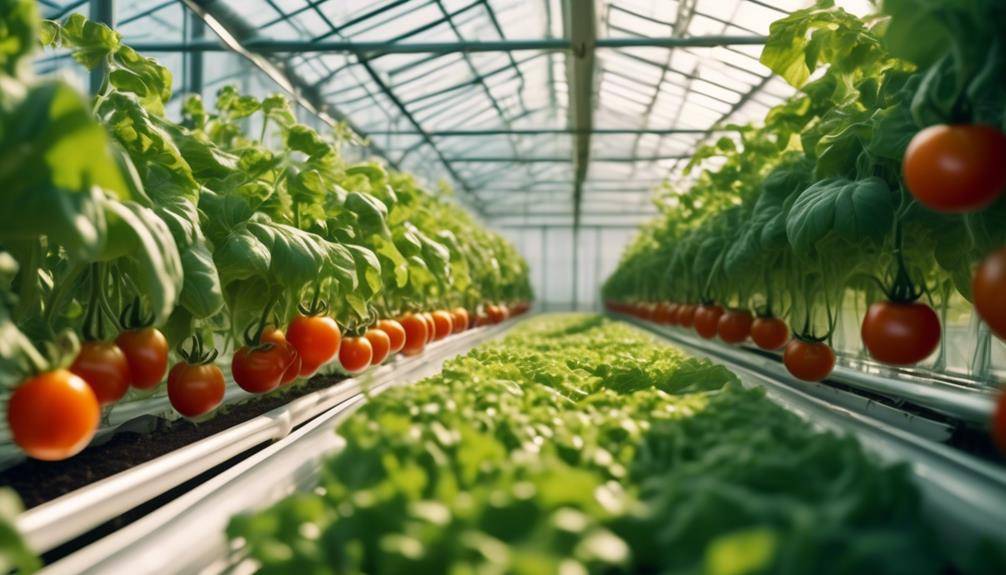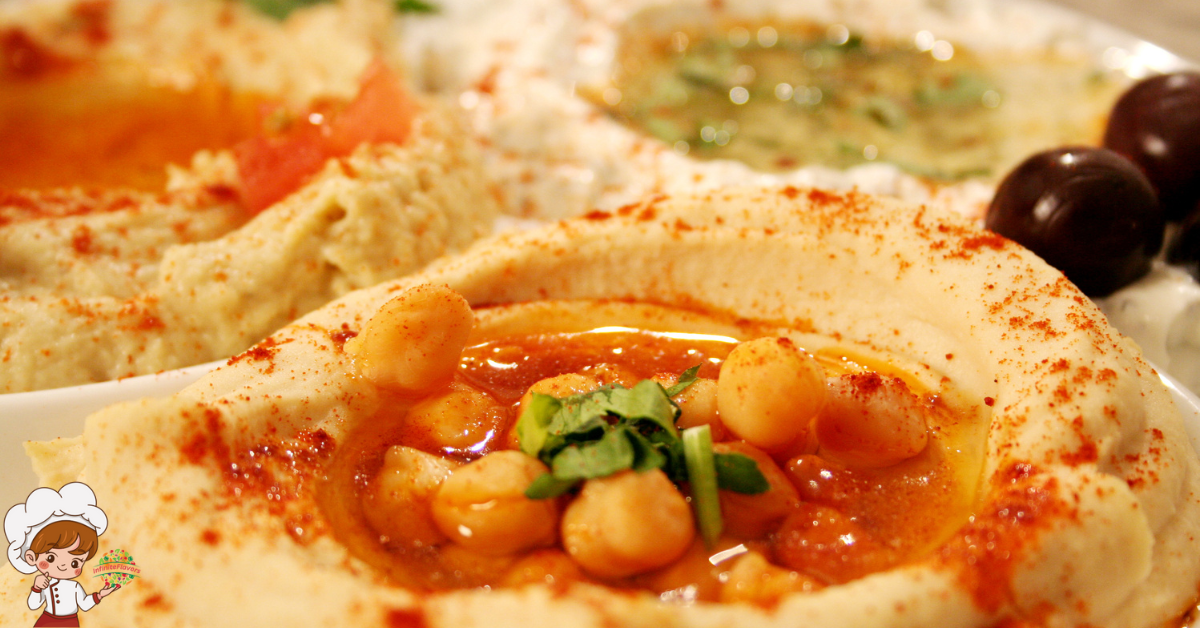Amazing Turkish Coffee Traditions And Brewing Techniques

Turkish Coffee Traditions And Brewing; Did you know that Turkish coffee has been a part of Turkish culture for over 500 years? It’s true! With its rich history and unique brewing techniques, Turkish coffee holds a special place in the hearts of coffee lovers around the world. But what makes Turkish coffee so special? How is it brewed? And what are some of the fascinating traditions associated with this ancient beverage? In this discussion, we will explore the intriguing world of Turkish coffee, uncovering its traditions and brewing techniques that have been passed down through generations. So grab a cup of coffee (Turkish, of course) and join us on this journey of discovery.
The Origins of Turkish Coffee
Turkish coffee, with its rich history and unique brewing method, has captivated coffee lovers around the world. The cultural evolution of Turkish coffee dates back to the 16th century Ottoman Empire, where it was first introduced to Istanbul by Syrian traders. From there, it quickly became an integral part of Turkish culture and an essential element of social gatherings.
The brewing process of Turkish coffee is a meticulous and time-honored tradition. It starts with the selection of high-quality coffee beans, which are then ground into a fine powder using a special grinder called a “cezve”. The amount of coffee and water used is carefully measured, with a ratio of one heaped teaspoon of coffee to one demitasse cup of water.
Next comes the brewing itself. The cezve is placed on a low flame and the coffee and water mixture is gently heated, allowing the flavors to slowly infuse. As the coffee begins to heat up, it forms a frothy layer on top called “kaymak”. The brewing process is complete when the coffee starts to boil and rise, at which point it is immediately removed from the heat.
Once brewed, Turkish coffee is traditionally served in small, handleless cups called “fincan”. It is customary to let the coffee settle for a few moments before taking the first sip, as the grounds sink to the bottom of the cup. The coffee is enjoyed slowly, savoring its strong flavor and unique aroma.
The cultural evolution of Turkish coffee and its intricate brewing process have contributed to its enduring popularity. Today, Turkish coffee continues to be a symbol of hospitality and a cherished tradition in Turkish culture. Its rich history and distinctive brewing method make it a captivating experience for coffee enthusiasts around the world.
The Cultural Significance of Turkish Coffee
When it comes to Turkish coffee, its cultural significance goes beyond just a beverage. The historical coffee traditions surrounding this rich brew have been passed down through generations, reflecting a deep-rooted connection to Turkish heritage. Symbolism in coffee rituals, such as fortune telling, adds an element of mystique and intrigue to the experience. Furthermore, Turkish coffee has long served as a social glue, bringing people together to share stories, engage in meaningful conversations, and strengthen bonds.
Historical Coffee Traditions
The cultural significance of Turkish coffee can be traced back to centuries of rich historical coffee traditions. Turkish coffee has its historical origins in the Ottoman Empire, where it was not only a popular beverage but also an important part of social and cultural rituals. It became a symbol of hospitality and was often served to guests as a sign of respect.
Turkish coffee also held a special place in ceremonies, such as engagements and weddings, where its preparation and serving were considered a significant cultural practice. The coffee itself carries cultural symbolism, with its thick and strong flavor representing the strength and endurance of the Turkish people. Its preparation and serving methods have been passed down through generations, preserving the historical traditions and cultural heritage associated with Turkish coffee.
Symbolism in Coffee Rituals
Coffee rituals in Turkish culture hold deep cultural significance and are steeped in symbolism. The act of preparing and serving Turkish coffee is more than just a routine; it is a way of connecting with others and expressing hospitality. The symbolism in coffee rituals reflects the values and beliefs of Turkish society. For example, the act of pouring coffee symbolizes friendship and respect.
The host pours the coffee into the guest’s cup, filling it to the brim, to show generosity and warmth. The coffee grounds that remain at the bottom of the cup are also significant. They are believed to reveal the drinker’s fortune and future. Reading the coffee grounds requires skill and intuition, and it is considered a form of divination. Overall, coffee rituals in Turkish culture not only bring people together but also provide a glimpse into the rich cultural heritage and traditions of the country.
Coffee as Social Glue
To truly understand the cultural significance of Turkish coffee, one must recognize its role as the social glue that brings people together and fosters connections in Turkish society. In the rich coffee culture of Turkey, sharing a cup of Turkish coffee is not just about satisfying a caffeine craving; it is a deeply rooted tradition that promotes social bonding and strengthens relationships. Here are two ways in which Turkish coffee serves as a social glue:
- Coffeehouses: Coffeehouses have been a hub of social interaction for centuries in Turkey. These establishments have served as meeting places for intellectuals, artists, and ordinary people, providing a space for conversation, storytelling, and even political discussions.
- Coffee Ceremonies: Turkish coffee ceremonies are not just about the preparation and consumption of coffee; they are a ritualistic act that brings people together. The process of brewing and serving Turkish coffee is steeped in tradition and etiquette, creating a sense of unity and shared experience.
Coffee plays a vital role in Turkish society, bringing people together, fostering connections, and creating a sense of community. Its cultural significance cannot be overstated.
Traditional Turkish Coffee Utensils
Using a set of essential utensils, you can master the art of brewing traditional Turkish coffee. These utensils are an integral part of the coffee brewing methods and traditional coffee rituals in Turkey. The first and most important utensil is the cezve, a small, long-handled copper pot specifically designed for brewing Turkish coffee. Its wide base and narrow top help to create a rich and flavorful brew.
Next, you will need a grinder to grind the coffee beans to a fine powder. A traditional hand grinder, known as a kahve degirmeni, is commonly used. The fine grind is essential for achieving the desired consistency and taste of Turkish coffee.
A small, demitasse-style coffee cup called a fincan is used for serving Turkish coffee. These cups are usually made of porcelain and are often adorned with beautiful designs. The fincan has a narrow rim and a handle, allowing you to savor the coffee’s aroma while sipping it slowly.
To measure the coffee and sugar accurately, a small spoon called a kahve kaşığı is used. The spoon is designed to hold the perfect amount of coffee and sugar for a single cup of Turkish coffee.
Lastly, a tray is used to present the coffee and its accompaniments, such as Turkish delight or a glass of water. The tray adds a touch of elegance to the coffee ritual and allows you to serve the coffee with style.
The Importance of Coffee Grounds in Turkish Coffee
When it comes to making Turkish coffee, the size of the coffee grounds plays a crucial role in the final taste and texture of the beverage. The finer the grounds, the stronger and more flavorful the coffee will be. Additionally, the brewing time also impacts the taste, as a longer brewing time can result in a more intense and robust flavor. Traditional Turkish coffee preparation techniques, such as using a cezve and incorporating special methods like frothing, also contribute to the unique and authentic taste of the coffee.
Ground Size Importance
The size of the coffee grounds plays a crucial role in achieving a perfect cup of traditional Turkish coffee. When it comes to Turkish coffee, the grounds should be very fine, almost like a powder. This fine grind is essential for the unique brewing technique used in Turkish coffee preparation.
Here are two key reasons why the size of the coffee grounds is important in Turkish coffee:
- Brewing Techniques: Turkish coffee is brewed using a method called “cezve” or “ibrik.” The fine grounds allow for a slow extraction process, as the coffee is simmered over low heat. This method ensures that the flavors are fully extracted, resulting in a rich and aromatic cup of coffee.
- Coffee Flavor: The fine grind of the coffee grounds maximizes the surface area of the coffee particles in contact with the water. This allows for a strong and intense flavor profile. The fine grounds also contribute to the thick and frothy texture that is characteristic of Turkish coffee.
Brewing Time Impact
What impact does the brewing time have on the flavor and texture of Turkish coffee, and how does the size of the coffee grounds contribute to this? The brewing time plays a crucial role in determining the flavor and texture of Turkish coffee. The longer the coffee grounds are exposed to hot water, the stronger and more intense the flavor becomes. However, if the brewing time is too short, the coffee may taste weak and lack depth.
The size of the coffee grounds also affects the brewing time and overall quality of the coffee. Finely ground coffee requires a shorter brewing time, resulting in a stronger flavor, while coarsely ground coffee requires a longer brewing time for a milder taste. Additionally, the brewing temperature and coffee bean quality further influence the brewing time and the final taste of Turkish coffee.
Traditional Preparation Techniques
To fully appreciate the art of Turkish coffee brewing, understanding the importance of coffee grounds is essential. In traditional brewing methods, Turkish coffee is made by grinding the coffee beans to a very fine consistency, almost like a powder. The coffee grounds play a crucial role in creating the unique flavor and texture of Turkish coffee. Here are two key points about the significance of coffee grounds in Turkish coffee:
- Rich flavor extraction: The fine grind size allows for maximum extraction of the coffee’s flavor. The grounds are boiled with water, allowing the rich aroma and oils to be released, resulting in a robust and full-bodied flavor.
- Cultural significance: Turkish coffee is deeply rooted in Turkish culture and is often prepared and served during social gatherings. The process of grinding the coffee beans and brewing the coffee is seen as a symbol of hospitality and connection, bringing people together to share in the enjoyment of this traditional beverage.
The Art of Grinding Coffee for Turkish Coffee
For optimal results when brewing Turkish coffee, expertly grinding the coffee beans is an essential step in achieving the rich and flavorful taste that this traditional beverage is known for. The art of grinding coffee for Turkish coffee is not to be taken lightly, as it plays a significant role in determining the overall quality of your brew.
One of the key factors influenced by the grinding process is the aroma of Turkish coffee. When you grind the beans, the volatile compounds responsible for the coffee’s fragrance are released, filling the air with an enticing scent. The aroma not only enhances the sensory experience but also contributes to the overall flavor profile of the coffee. Therefore, using freshly ground coffee ensures that you capture the full essence of the beans and enjoy a more aromatic cup of Turkish coffee.
Another important aspect impacted by the grinding process is the temperature of the coffee. The size and consistency of the coffee grounds directly affect the extraction rate and the flavor profile of the final brew. Finer grinds tend to extract more quickly, resulting in a stronger, more concentrated flavor. On the other hand, coarser grinds take longer to extract, producing a milder taste. By grinding the coffee to the appropriate size, you can control the extraction and achieve the desired balance of flavors in your Turkish coffee.
To achieve the perfect grind for Turkish coffee, it is recommended to use a manual coffee grinder specifically designed for this purpose. These grinders offer fine adjustments, allowing you to achieve the ideal consistency. It is crucial to grind the coffee just before brewing to preserve the freshness and maximize the flavor potential. With the right grinding technique and equipment, you can elevate your Turkish coffee experience to new heights.
The Unique Brewing Process of Turkish Coffee
The next step in the process of brewing Turkish coffee is to master the unique brewing technique that sets this traditional beverage apart from others. Turkish coffee is known for its bold flavor and rich texture, and achieving the perfect brew requires attention to detail and precision. Here are the key elements to consider when brewing Turkish coffee:
- Ground size variations:
- Turkish coffee requires an extra fine grind, finer than espresso or drip coffee. The coffee beans should be ground to a powder-like consistency, resembling talcum powder. This fine grind allows for a full extraction of flavors and creates the characteristic thick foam, known as “kaymak,” on top of the coffee.
- The grind size is crucial in Turkish coffee brewing. If the coffee is ground too coarse, it will result in a weak and watery brew. On the other hand, if the coffee is ground too fine, it may lead to over-extraction and a bitter taste. Finding the right balance is key to achieving the perfect cup of Turkish coffee.
- Brewing temperature control:
- Turkish coffee is traditionally brewed in a cezve, a small, long-handled pot made of copper or brass. The brewing process requires careful temperature control. The cezve is placed over low heat, and the coffee is slowly heated until it reaches a simmering point. It is important to maintain this gentle simmer throughout the brewing process to avoid burning the coffee and to allow the flavors to fully develop.
- The brewing temperature should be around 165-175°F (74-79°C). This low and consistent heat ensures a slow and even extraction, resulting in a well-balanced and aromatic cup of Turkish coffee. It is crucial to closely monitor the temperature to achieve the desired flavor profile.
Mastering the unique brewing process of Turkish coffee takes practice and patience. By understanding the importance of ground size variations and brewing temperature control, you can create a cup of Turkish coffee that is a true delight for the senses.
The Role of Water in Turkish Coffee Brewing
Water plays a crucial role in the brewing process of Turkish coffee, influencing its taste, texture, and overall quality. The role of water temperature is particularly important in achieving the perfect cup of Turkish coffee. Traditionally, Turkish coffee is brewed using cold water, which helps to extract the flavors and aromas from the coffee grounds more slowly. This slow extraction process allows for a more nuanced and balanced flavor profile.
The impact of the brewing method on the water temperature cannot be overstated. Turkish coffee is typically prepared using a cezve, a small, long-handled pot made of copper or stainless steel. The cezve is placed over a low flame and the coffee mixture is slowly heated. This slow heating process ensures that the water reaches the optimal temperature for brewing, which is around 165-175°F (74-79°C).
Maintaining the correct water temperature throughout the brewing process is crucial. If the water gets too hot, it can result in a bitter and burnt taste. On the other hand, if the water is not hot enough, the coffee may taste weak and under-extracted. Achieving the right water temperature requires careful attention and skill.
In addition to temperature, the quality of the water used also affects the final taste of Turkish coffee. Ideally, the water should be cold, fresh, and free from any impurities or odors. Using filtered or bottled water is recommended to ensure a clean and pure taste.
Understanding the Foam in Turkish Coffee
Understanding the foam in Turkish coffee is essential for achieving the perfect brew. Not only is the foam a sign of quality, but it also plays a crucial role in enhancing the flavor and aroma of the coffee. To master the foaming technique, it is important to understand the secrets behind creating a rich and velvety foam that will elevate your Turkish coffee experience.
Foam: Sign of Quality
To truly appreciate the quality of Turkish coffee, one must understand the significance of the foam that delicately adorns its surface. The foam in Turkish coffee is not just a visual aspect; it is an indicator of the coffee’s quality and brewing technique. Here’s why foam is considered a sign of excellence:
- Foam thickness:
- Thicker foam indicates a well-brewed coffee, as it requires skill and precision to create a dense and creamy foam.
- Thin or dissipated foam may suggest poor brewing technique or low-quality coffee beans.
- Cultural significance of foam:
- In Turkish culture, the foam is highly valued, and it holds a symbolic meaning. It represents hospitality and is a reflection of the host’s skills and attention to detail.
- The presence of foam also adds to the sensory experience of drinking Turkish coffee, enhancing its aroma and taste.
Understanding the foam in Turkish coffee allows you to appreciate the craftsmanship behind this traditional beverage and savor its rich flavors to the fullest.
Foaming Technique Secrets
Achieving the perfect foam in Turkish coffee requires mastering the secret techniques of foaming. There are various foaming technique variations that can be used to create the desired foam consistency. One popular method involves adding a small amount of cold water to the coffee grounds and stirring it vigorously until it starts to foam.
Another technique involves heating the coffee slowly and continuously stirring it in a circular motion to create a creamy foam. However, even with these techniques, you may encounter some common foaming issues. If the foam collapses quickly, it could be due to using coffee grounds that are too fine or not allowing the coffee to simmer long enough. If the foam is too thin, try using fresher coffee grounds or adjusting the heat level. By understanding these foaming techniques and troubleshooting any issues that arise, you can master the art of creating the perfect foam in Turkish coffee.
Mastering the Heat in Turkish Coffee Brewing
For optimal results when brewing Turkish coffee, it is essential to master the art of controlling the heat during the brewing process. Achieving the perfect extraction and flavor profile of Turkish coffee heavily relies on maintaining the right temperature throughout the brewing journey. Here are some key tips to help you master temperature control and achieve the best results:
- Use low heat: Turkish coffee requires gentle heat to allow the flavors to develop slowly. Start by using low heat and gradually increase if needed. Avoid high heat as it can lead to a burnt or bitter taste.
- Watch the cezve: The traditional pot used for brewing Turkish coffee, called a cezve, is made of copper or brass, which conducts heat efficiently. Keep a close eye on the cezve and remove it from the heat source as soon as it starts to foam and rise. This ensures that the coffee doesn’t overheat and preserves its delicate flavors.
- Use a heat diffuser: If you find it challenging to control the heat directly on your stovetop, consider using a heat diffuser. This handy tool helps distribute heat evenly, preventing any hotspots that may scorch the coffee.
- Maintain a steady temperature: Once the coffee starts to foam and rise, reduce the heat to maintain a steady temperature. This slow and controlled brewing process allows the coffee to extract its full flavor and aroma.
The Importance of Timing in Turkish Coffee
Timing plays a crucial role in the preparation of Turkish coffee, ensuring that each cup is brewed to perfection. The art of timing is a skill that Turkish coffee makers have honed over generations, as it requires precision and careful attention to detail. From the moment the coffee grounds hit the water to the final pour, every step must be timed just right to achieve the rich and flavorful cup of Turkish coffee that is beloved around the world.
The first step in the art of timing is allowing the coffee grounds to bloom. As soon as the water reaches a boil, the coffee grounds are added to the pot and stirred. It is important to let the coffee bloom for a few seconds, allowing the flavors to fully develop. This step sets the foundation for the rest of the brewing process.
Next comes the waiting game. After the initial stir, the coffee is left to simmer over low heat. This step requires patience and precision, as the coffee must simmer for just the right amount of time. Too short, and the coffee will be weak and lacking in flavor. Too long, and the coffee can become bitter and over-extracted. The perfect timing can vary depending on factors such as the size of the pot, the heat source, and personal preference. It is a delicate balance that requires experience and a keen eye.
The Ceremony of Serving Turkish Coffee
After mastering the art of timing in the preparation of Turkish coffee, you are now ready to immerse yourself in the captivating ceremony of serving this beloved beverage. The art of pouring Turkish coffee is not just about transferring the coffee from the pot to the cup; it is a carefully choreographed ritual that has been passed down through generations. Let’s explore the traditional serving rituals that make the experience of Turkish coffee truly special:
- Presentation: Turkish coffee is traditionally served in small, handle-less cups called “fincan” accompanied by a small plate and a glass of water. The cup is placed on the plate, and a spoon is placed next to it. The water is meant to cleanse the palate before and after drinking the coffee.
- Pouring: Pouring Turkish coffee requires precision and skill. The coffee is poured slowly and steadily into the cup, stopping just before reaching the rim. This allows the sediment to settle at the bottom of the cup, ensuring a smooth and flavorful experience.
- *The Art of Froth*: The last sip of Turkish coffee is known for its velvety foam. To achieve this, a small amount of coffee is poured into a separate cup and whipped vigorously with a spoon until it forms a frothy layer. The froth is then carefully transferred onto the coffee in the serving cup, adding a creamy texture to the final sip.
- *Fortune Telling*: Turkish coffee is often associated with fortune telling. After serving the coffee, the cup is covered with the saucer, and the cup is gently turned a few times to allow the grounds to spread across the inside. Once the coffee is consumed, the cup is flipped upside down on the saucer, and the patterns formed by the coffee grounds are interpreted to reveal insights into the drinker’s future.
The ceremony of serving Turkish coffee is an integral part of the experience. It is a time to savor the flavors, appreciate the tradition, and create lasting memories. So, next time you pour a cup of Turkish coffee, remember the beauty and significance of this ancient ritual.
Turkish Coffee Reading and Fortune Telling
Turkish coffee reading and fortune telling is an ancient practice deeply intertwined with the cultural heritage and mystique of this beloved beverage. In Turkish coffee traditions, the art of coffee fortune telling is considered both an entertaining pastime and a way to gain insights into one’s future. This mystical practice has been passed down through generations and continues to captivate people around the world.
Coffee fortune telling begins with the preparation of the Turkish coffee itself. Once the coffee is brewed, it is customary to leave a small amount of liquid in the cup. The remaining coffee grounds settle at the bottom, forming intricate patterns and symbols that are the basis for the reading. The cup is then covered with a saucer and gently flipped upside down to allow the grounds to spread and settle along the sides.
The fortune teller, often a friend or family member, takes on the role of deciphering the symbols and patterns left by the coffee grounds. The reading involves interpreting the shapes, lines, and clusters of the grounds to uncover messages and predictions about the person’s life. The fortune teller examines the coffee cup from various angles, noting the position of the symbols and their relationship to one another.
Each symbol holds a specific meaning in coffee fortune telling. For example, a heart shape may indicate love and romance, while a bird symbolizes freedom and travel. The fortune teller combines these individual interpretations to create a comprehensive reading that provides insights into various aspects of the person’s life, such as relationships, career, and health.
Coffee fortune telling is not only a source of entertainment but also a way for individuals to gain guidance and clarity in their lives. Whether you believe in the supernatural or not, this ancient practice is a fascinating aspect of Turkish coffee traditions that adds an extra layer of enchantment to the experience of enjoying a cup of Turkish coffee.
Modern Variations and Innovations in Turkish Coffee
As Turkish coffee continues to captivate people around the world, the art of coffee brewing has seen modern variations and innovations that add a new twist to this beloved beverage. These modern variations and brewing innovations not only enhance the taste and aroma of Turkish coffee but also provide coffee enthusiasts with new experiences. Here are some of the exciting developments in Turkish coffee brewing:
- Alternative Roasts: Traditionally, Turkish coffee is made with medium-roasted beans. However, modern variations have introduced different roast profiles to create unique flavors. Light roasts bring out the coffee’s natural acidity and floral notes, while dark roasts offer a bolder, more intense taste.
- Infused Flavors: To add an extra layer of complexity, some coffee lovers have started experimenting with infused flavors in their Turkish coffee. From vanilla and cardamom to cinnamon and chocolate, these additions bring a delightful twist to the traditional brew.
- Brewing Techniques: Besides the classic brewing method, new techniques have emerged to cater to different preferences. One popular variation is the cold brew method, where the coffee is steeped in cold water for an extended period, resulting in a smoother and less acidic taste. Another innovation is the use of pour-over devices, which allow for precise control over the brewing process and yield a cleaner cup of coffee.
- Presentation: In addition to the brewing process itself, modern variations of Turkish coffee also focus on presentation. Baristas and home enthusiasts have started experimenting with latte art and innovative serving vessels to elevate the visual appeal of the coffee, making it a feast for both the eyes and the taste buds.
These modern variations and innovations in Turkish coffee brewing showcase the versatility of this ancient beverage, attracting coffee lovers with their unique flavors, techniques, and presentation styles. Whether you prefer the traditional brewing method or enjoy exploring new twists, there is a modern Turkish coffee variation to suit every palate.
Frequently Asked Questions: Turkish Coffee Traditions And Brewing
What Are Some Popular Modern Variations of Turkish Coffee?
Popular variations of Turkish coffee include adding spices like cardamom or cinnamon, using different types of sweeteners like honey or chocolate, and even experimenting with different brewing techniques to create unique flavors and aromas.
What Is the Ideal Brewing Time for Turkish Coffee?
The ideal brewing time for Turkish coffee depends on several factors. These include the grind size, heat intensity, and personal preference. Achieving the perfect brewing time will result in a rich and flavorful cup of coffee.
Can Turkish Coffee Be Brewed With Different Types of Coffee Beans?
Yes, Turkish coffee can be brewed with different types of coffee beans. The choice of coffee bean variety can affect the taste and aroma of the coffee, resulting in unique flavors when combined with different brewing methods.
Are There Any Specific Health Benefits Associated With Drinking Turkish Coffee?
Drinking Turkish coffee can have specific health benefits for brain health. Additionally, it holds cultural significance in daily life. The rich aroma and unique brewing process make it a cherished tradition in Turkish culture.
What Are Some Common Mistakes to Avoid When Brewing Turkish Coffee?
When brewing Turkish coffee, it is important to avoid common mistakes. These mistakes can affect the taste and quality of your coffee. Understanding the proper brewing techniques will help you avoid these pitfalls.
Conclusion
In conclusion, Turkish coffee is not just a beverage, but a cultural tradition that has been passed down through generations. The art of brewing Turkish coffee involves specific techniques, such as grinding the coffee beans to a fine powder and carefully timing the brewing process. The ceremony of serving Turkish coffee is accompanied by fortune telling, adding an element of mystique to the experience. While modern variations and innovations have emerged, the traditional methods and utensils continue to hold importance in preserving the authenticity of Turkish coffee.








